Valencia has always been a fortunate land in gastronomic matters. The great richness of its orchard, the nearby mountain and the sea have provided raw materials of extraordinary quality. In addition, history has seen many cultures, almost all of which are Mediterranean, parading through our land, leaving their contribution in culinary matters as well. The result is a fascinating, varied and cheerful cuisine, almost designed to eat with friends, as we Valencians like it.
In fact, we Valencians love to eat "de picaetes", our way of understanding tapas, which consists of ordering several dishes to share with all the diners at the table and thus taste everything. There is the culture of the tapa as small individual portions, but we like sharing much more. We seem to be very serious about eating around people!
WHERE TO EAT IN VALENCIA
The offer in Valencia is enormous and varied. For every taste and every pocket. In the centre and on the periphery. Avant-garde, traditional, ethnic and even experimental.
We are going to try to give you some advice about bars and restaurants that we know well and in which we trust, with some orientative indications so that you know what is necessary, but always and without exception we have to tell you that it is eaten very well in all of them.
For tapas and snacks and although the places are very different from each other, our selection could be this one:
For classic tapas TASCA DE ANGEL, not so classic but very good is LA SENIA, and for classic clochinas and tapas BAR PILARETA, all of them in the historic centre. If you are going to Ruzafa, maybe you should stop off at the very classic and authentic BAR CHÉ or go to the wonderful CERVECERÍA MAIPI where you can have tapas or eat more serious, traditional market cuisine. For avant-garde tapas, perhaps the most cutting-edge is VUELVE CAROLINA, one of Quique Dacosta's restaurants. And then, back to the tradition, it is worth taking a stroll to the Cabanyal to the CASA MONTAÑA winery and enjoy the atmosphere. Interesting underground tapas cellar, very close to our shop, is SORBITO DIVINO.
If you have deep pockets or an intense love of cooking, you should try to book in one of these places
EL POBLET by Quique Dacosta, with its Michelin star, is one of the flags of avant-garde gastronomy in Valencia and in the world. RICARD CAMARENA is another of the great names in Valencia's cuisine today. LA SALITA that is making an impact in recent times with its kitchen.

Much more traditional, but from spectacular raw material you can go to TABERNA ALKAZAR, CIVERA or CHOCOMELI, small in size, but enormous in quality.
No surprises, but of great quality we would recommend going to TRINQUETE PELAYO, CANELA, PUERTA DEL MAR, KARAK , VIVA MASCARAQUE or the ENCUENTRO tavern.
We like the Italians LA FORCOLA or CIAO BELLA and the Japanese TASTEM.
A recent discovery in Valencia is RESTAURANT 64, with a spectacular quality/price ratio. In the same vein, perhaps, we could include TAGO MAGO.
AND WHERE TO EAT PAELLA?
There are many Valencians who live the tradition of Sunday paella, with family or friends, which is repeated every week for years and generations. Paellas to the taste of each family that makes that almost nobody finds a paella without defects beyond those of his own house. That's why it's so difficult to recommend good paella places because it's a bit complicated for the Valencians... but we're going to take risks because we're sure that our recommendations will make you remember the paella for a long time.
In the area of the historical centre there is a place that is much more than recommended for rice dishes and which is also an emblematic place for the traditional Valencian sport of "pilota". This is the new restaurant of the TRINQUETE PELAYO, highly recommended for everything and especially for rice dishes.
Of great tradition in Valencia is also NAVARRO RESTAURANT, next to the Town Hall, with very good paellas and in general all its traditional cuisine. Much more daring is LA PITANZA, which alternates the newest rice dishes with the most traditional and all the nails.
If we approach the beach, we must pay tribute to CASA CARMELA, which has been making firewood paellas since 1922 and boasts of making them with the same recipe and manners. For many years it has been the benchmark for the most demanding Valencians and continues to have a mostly local audience, who are very clear about what they expect to find.
Two other temples in the tradition are LA PEPICA, where all kinds of characters have passed through for many years, and L'ESTIMAT, which has always been at the highest level, with its traditional cuisine at the entrance of the restaurant, so that everything can be seen without cheating or cardboard.
A little further away from the historical centre, but with a lot of interest would be the ALQUERÍA DEL POU and the ALQUERÍA DE BROSQUIL, which in addition to magnificent rice dishes have a beautiful and very pleasant place. And in the same area, the RACÓ DE LLUÍS dares to try the most traditional paellas and very innovative rice dishes that some might consider heresy, but that are silent when tasted.
And if we feel like going on a bike tour, it might be fantastic to go to the banks of the Albufera and eat in the idyllic NOU RACÓ (ANTIQUE RACO DE L'OLLA) in the very waters of the lake or in the magnificent L'ESTABLIMENT which cultivates tradition like few others.
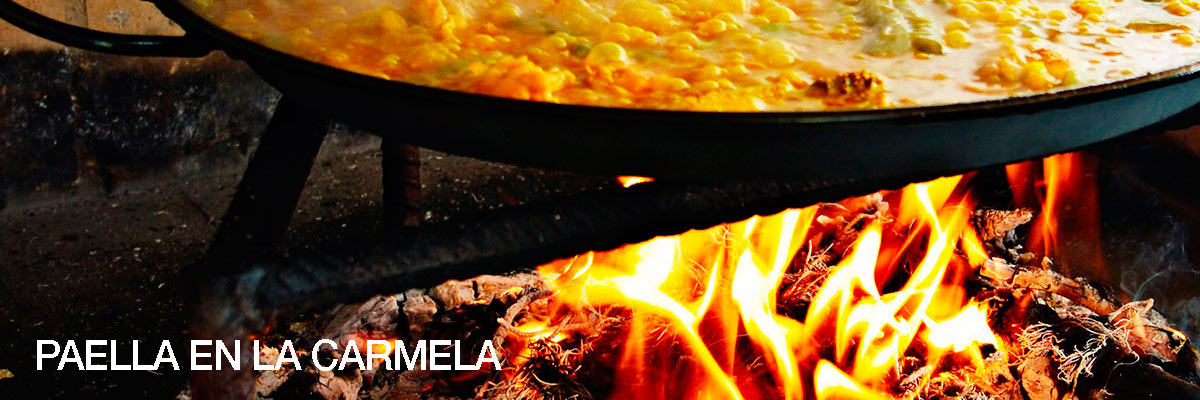
LUNCH (L'ESMORZAR), ALMOST A RELIGION
In Valencia the word "lunch" has an unmistakable meaning for everyone. No one doubts what it is and when it's lunchtime.
We Valencians "have breakfast" when we get up (some of them very little) and then "have lunch" at around 9:30-11:00, depending on the area and, above all, the type of work. Then comes the "lunch" at around 14:00, the "snack" (some of them) at mid-afternoon and the "dinner" at around 9:00.
But lunch is more than just a meal. The natural thing is to make a stop at work for lunch and then continue working. Many would rather not eat than not eat lunch if they had to give up a meal.
Lunch is usually served during the week with co-workers and on weekends with friends or fellow hobbyists. It is a whole rite, almost a religion, in which everything is done in a very short time (usually no more than half an hour in total). When we go for lunch, the natural thing is to order a sandwich and the drink you want (beer or wine with soda is the most traditional) and that on the table we already have a dish of olives and peanuts as a courtesy (if possible with peanuts). It is topped with coffee and some with carajillo.
It is the stellar moment for BLACK AND WHITE with BEANS, POTATO TORTILLAS, ALLCACHOFAS, ONION, CALAMARES with mayonnaise or all-i-oli, TITAINA, LOIN WITH TENDER GARLIC,... It is the highlight of a Valencian's day.
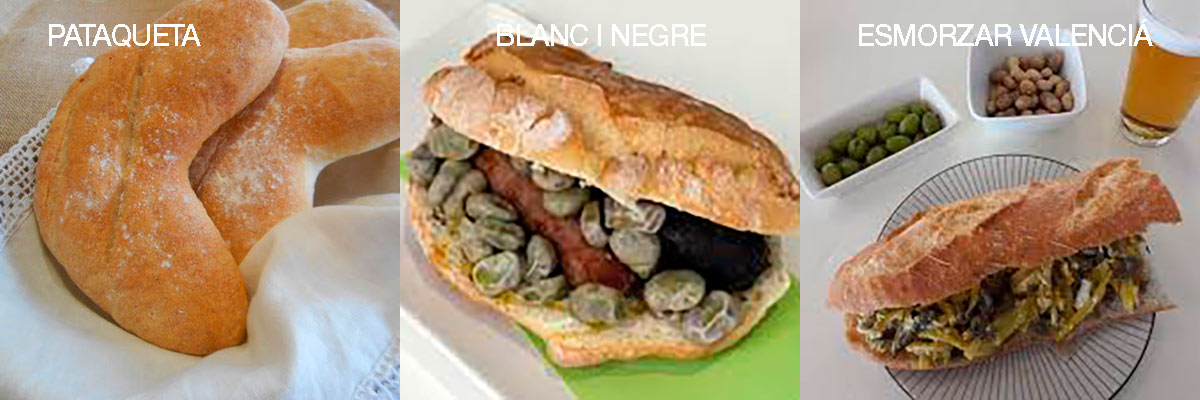
In and around Valencia there is a great lunch, but we have to admit that in the city centre it is becoming more and more difficult to find first class lunches. We recommend going to some places that maintain the essence of what a good lunch is, regardless of the aesthetic characteristics of the place.
The ROJAS CLEMENTE bar has an extraordinary bar full of temptations that Enrique makes every day before the sun comes up. A true temple of lunch. The BAR RICARDO, with a great tradition and extraordinary genre, although lunches are less and less important than the rest of the meals. DON PABLO in the very financial district of the city and with an exquisite offer for even the most demanding and in a hurry. The QUIOSCO LA PÉRGOLA, in the Alameda, which has been providing some of the best lunches in the city for many years. LA PASCUALA, in the maritime towns, famous for its enormous sandwiches. The giant and juicy tortillas of the ALHAMBRA brewery and the exquisite renewal of the traditions of the TRINQUETE PELAYO.
WHAT TO EAT IN VALENCIA
In Valencia today you can eat literally anything. Of course, food arrives from all over the world and there are also many restaurants from other cultures present in our city, not to mention our wonderful chefs who use the most incredible techniques and the most varied products we can imagine.
However, we can identify a very clear traditional Valencian cuisine and also other dishes that, without necessarily being exclusive to our land, are part of our gastronomic culture and our way of eating. It is these dishes that we are going to highlight here because, probably, they will be the least known by travellers or those that, at last, will be able to taste in the original, authentic way.
With an orchard like ours, which produces several crops a year and supplies the markets on a daily basis, it seems necessary that the products be tasted almost without preparation, preserving all their flavour. The world of salads is fascinating in Valencia and all travellers should try a VALENCIANA SALAD, a cult of the Huerta de Valencia, with extraordinary tomatoes, onions, lettuce, olives and generally also capers and some tuna or mojama.
The ESGARRAET, "desgarradito" in Spanish, is a simple but extraordinary dish based on roasted red peppers, English cod and some laminated garlic, well sprinkled with extra virgin olive oil. A whole call to bread, whether in the form of toast ("torraeta") or in any other form.
The vegetable garden is a constant protagonist in many dishes that are consumed as tapas, as an accompaniment, or as an ingredient in other more elaborate dishes. ALCACHOFAS A LA PLANCHA are very typical, a delicacy that, we do not know why, is not very common in other places. TENDER GARLIC in Valencia is constantly present in the kitchen, in the scrambled or tender garlic tortillas, accompanying the very famous black and white or tender garlic sandwiches, or even in very different rice dishes. Special mention should be made of the TENDERN BEANS with their own culture in the way they are cooked, which makes a clear difference. They are usually eaten alone, as a side dish with all kinds of dishes and also in fabulous tortillas.
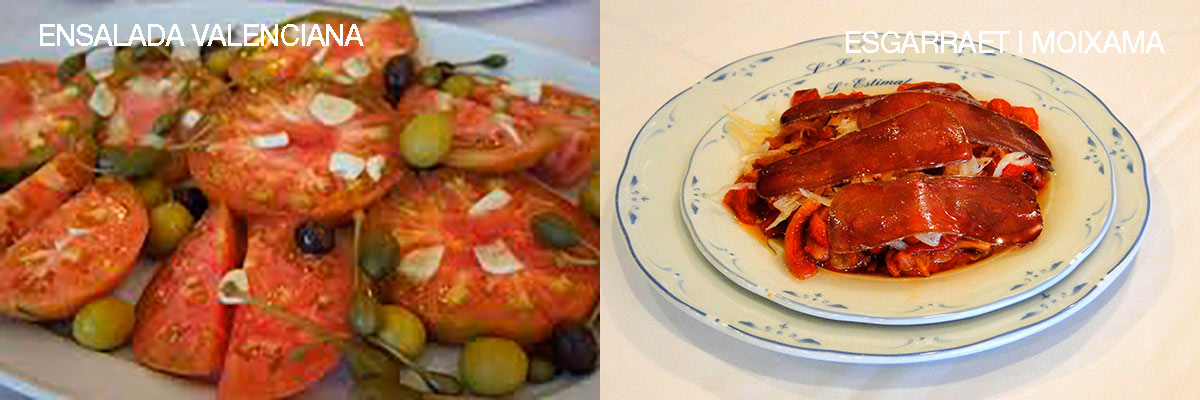
he sea also fills the plates, frying pans and basins of Valencian kitchens every day. They arrive very fresh every morning at the markets and it is a spectacle and a luxury to see them in the fishmongers. We're so used to it that sometimes we don't value what we have.
They are almost always simple preparations, a tribute to freshness and flavour, because there is nothing to cover and much to boast about. One of the star dishes in the bars of Valencia are the CLOTXINAS, almost always steamed in our own way, although there are other traditional dishes as well. GAMBAS, grilled or boiled and CIGALITAS DE PLAYA fried with tender garlic are dishes from another world. Like grilled TELLINAS from the beach, or with tomato and onion fried in a spicy sauce.
One of the Valencian tapas par excellence is the really delicious SEPIONETS A LA PLANCHA, although you will not be able to resist leaving the dish shining by dipping bread in its increasingly blunt sauce. And close relatives, but of another caliber would be the fabulous GRILLED BEACH SQUID that can be eaten as a tapa or as a main course.
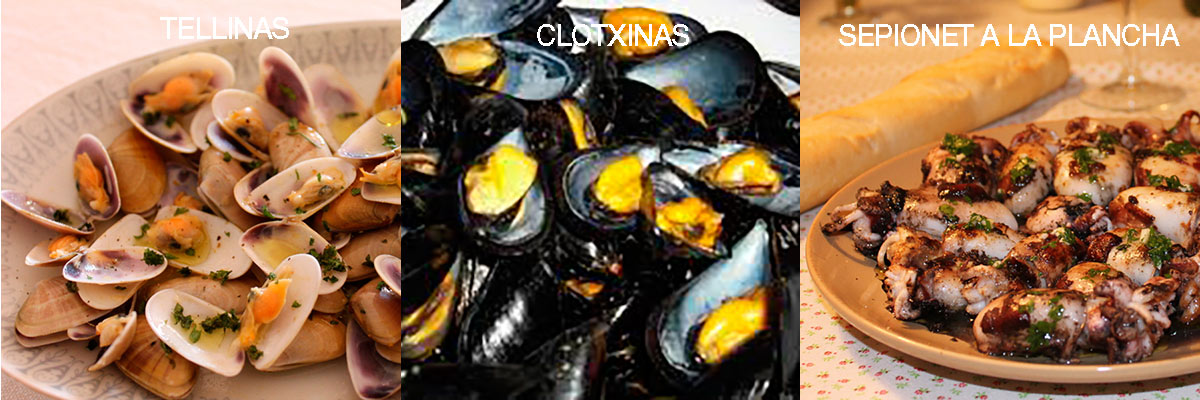
The great protagonist of Valencian cuisine, without a doubt, is rice. We cook it in many ways but we can summarize them in three types of rice: broth and honeyed (with less broth, but not dry) that are cooked in clay or iron perol, and dry rice, which is cooked in paella or casserole if cooked in the oven.
The rice dishes are very good and have a great tradition in Valencia and the surrounding area, although they have been eclipsed to a large extent by the fame of the paella. The most successful are the so-called ARRÒS AMB FESOLS I NAPS (rice with beans and turnips), ARRÒS AMB BLEDES (rice with chard), ARRÒS AMB PATO (rice with duck) and ARRÒS AMB CRANC (rice with crab).
Among the dry ones, we would highlight the ARRÒS AL FORN (oven-baked rice), which in many places is known as "arròs passejat" (walked rice) because it was traditional to take it to the oven from home and then go and pick it up. It is one of the most appreciated rice dishes by Valencians and is cooked in an earthenware casserole dish, baked.
And then, of course, there are the paellas, the dry rice par excellence known all over the world. The authentic PAELLA VALENCIANA is the one that is cooked with chicken and rabbit, green beans, locust beans garrofó(a flat native bean) and a little tomato at the beginning. Small variations such as adding duck, artichokes or snails are allowed, but little more. The rest in Valencia are considered almost heresies, at least when we talk about Valencian paella. For those inventions there are already other rice dishes!
The PAELLA DE MARISCO, the ARRÒS DEL SENYORET which is a variant with peeled seafood, the PAELLA DE LANGOSTA or BOGAVANTE are also clearly Valencian and for many people even more attractive. All of them also have a version with noodles called FIDEUÁ.
What you can never, ever ask for in Valencia is a "mixed paella", really frowned upon by any Valencian for being so disrespectful of tradition and good taste.
There are many other fantastic rice dishes such as ARRÒS NEGRE, PAELLA DE COLIFLOR Y BACALAO or PAELLA DE VERDURAS.
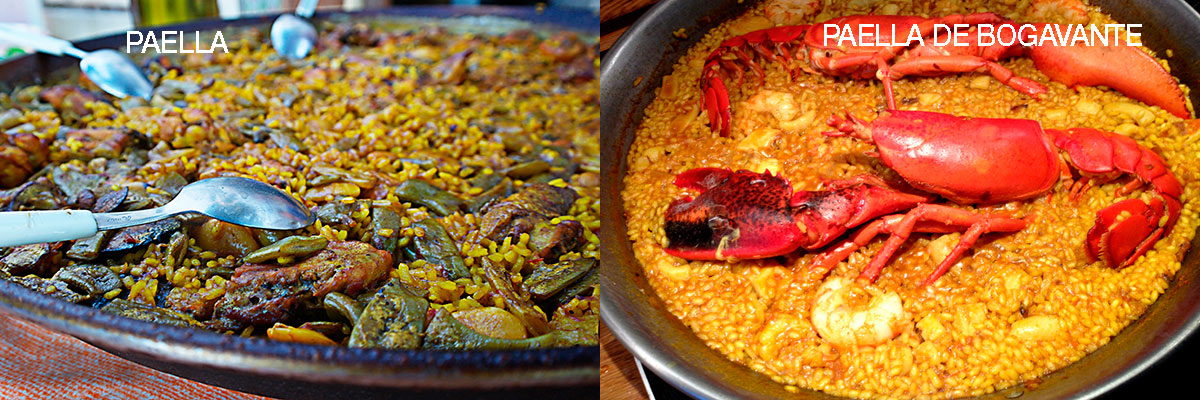
The variety of fish available is enormous and there are many ways to prepare them. In our opinion, the beach fish and the rock fish are outstanding. Most of the times they are grilled, baked or with seafood sauces in the form of SUQUET. Among these preparations, the ALL I PEBRE (garlic and chilli pepper) stands out, which is how ANGUILAS are usually prepared, but also some other fish such as LLOBARRO (sea bass), CORBALL or CORVINA.
All types of meat can be tasted in Valencia, but it is worth mentioning the traditional sausages, especially the sausages and the onion morels, but also the so-called balls that are added to the stew (known in Valencia as PUCHERO).
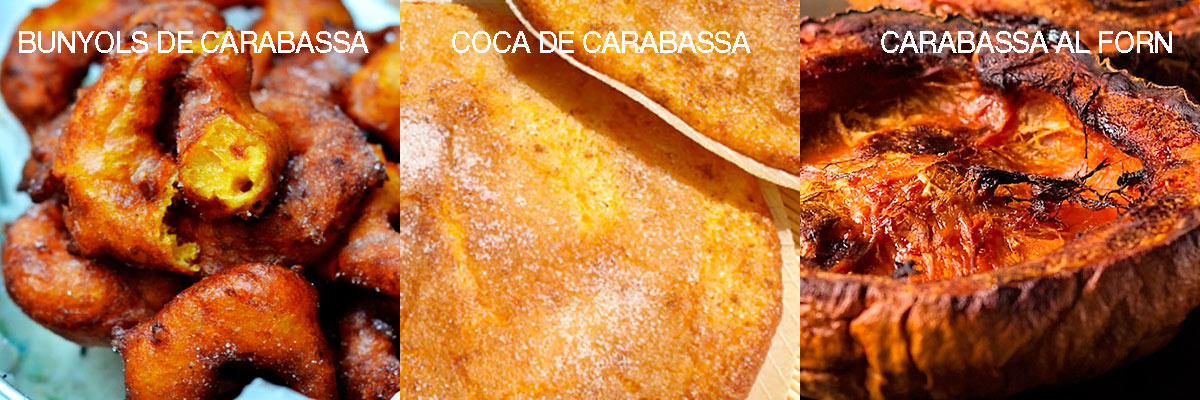
There are many traditional Valencian desserts and also pastries, but we would like to highlight some that we especially like.
Among the desserts, perhaps the most typical ice creams from MANTECADO, LECHE MERENGADA or TURRÓN, fruits such as Valencian strawberries (with orange, mistela or cream) and natural or prepared oranges, or some very old ones such as ARNADÍ, based on pumpkin and almonds, or ARROP I TALLADETES with which today they make avant-garde preparations in elite restaurants but which was always a humble dessert.
But in Valencia, the most outstanding dessert is the CALABAZA ASADA, which is not consumed like this anywhere else and which to all of us Valencians seems to be an extraordinary delicacy.
The traditional sweets are innumerable, but we would like to recommend to all visitors to Valencia that they try TORTAS CRISTINAS or their version of COQUES DE CARABASSA, a kind of flat sponge cakes.
And for snacks we have the hot version of the CHOCOLATE WITH PUMPS BUÑUELOS (carabassa bunyols) and the cold version of the HORCHATA WITH FARTONS.

